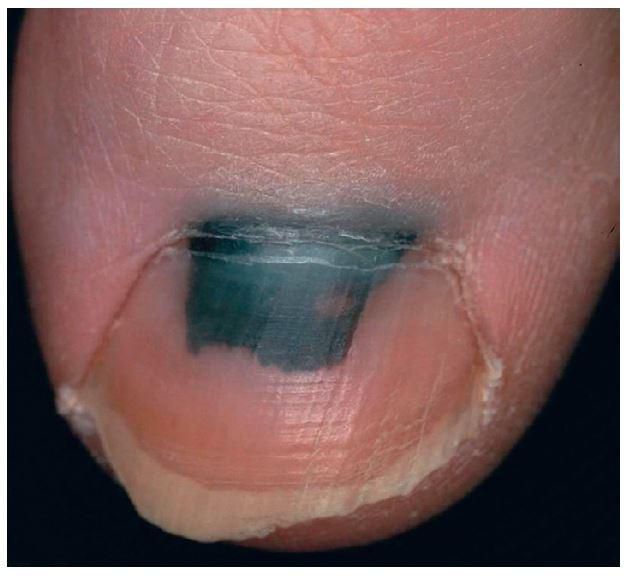4 early signs of skin cancer no one told you about
![Scaly skin on face derma [Derma Essentia]](https://image.api.sportal365.com/process/smp-images-production/pulse.com.gh/24072024/7570de7b-c0e7-4c10-aa1f-8984878a0edd?operations=autocrop(700:467))
But, what if the early signs are not what we’ve always been told to look out for? Beyond the well-known warnings like a new mole or a changing freckle, there are subtler signs that often go unnoticed.
Let's shed some light on these early indicators so you can stay one step ahead in protecting your skin’s health.
1. Spots on the skin
A new spot on your skin is worth keeping an eye on, especially if it looks different from others around it. But there's more to watch out for.
Have you noticed a sore that doesn’t heal? Or perhaps a patch of skin that’s consistently itchy, crusty, or bleeds a bit? These are not typical skin behaviors and deserve a closer look, possibly by a professional.
![Mole [blackdoctororg]](https://image.api.sportal365.com/process/smp-images-production/pulse.com.gh/24072024/f7eb4c1d-f052-4384-920c-10b95b4c08e2)
They could be early signs of skin cancer, flying under the radar of our usual mole-monitoring routine.
2. Change in skin colour
We often hear about checking for moles that change in size or shape, but what about color? An early sign of skin cancer can be a mole or spot that undergoes a significant color change.
This doesn’t just mean getting darker; it could also turn red, blue, or even white. Varied colors within one mole are a particularly loud alarm bell.
3. Change in texture
Another sign that doesn’t get much airtime is a change in texture. If a spot on your skin suddenly feels rough, scaly, or develops a raised border, it’s not something to brush off.
Skin cancer can manifest in the texture of your skin before it becomes visually alarming. Paying attention to how your skin feels, not just how it looks, can lead you to catch something amiss early on.
![Scaly skin on face derma [Derma Essentia]](https://image.api.sportal365.com/process/smp-images-production/pulse.com.gh/24072024/7570de7b-c0e7-4c10-aa1f-8984878a0edd)
4. Dark spots on nails
An often-overlooked area for early signs of skin cancer is under your fingernails or toenails. A dark streak or a spot under a nail that wasn’t caused by an injury should raise questions.
While it might be easy to dismiss as a bruise, if it doesn’t go away or starts to change, it could be an early warning sign of melanoma, a type of skin cancer.

Vigilance is key
Recognizing these early signs of skin cancer can significantly increase your chances of successful treatment.
It’s not just about looking for the obvious changes but also tuning into the subtler shifts in your skin’s appearance and texture. Regular check-ups with a dermatologist can also help catch anything you might miss.
Remember, being proactive and vigilant about your skin health isn’t just smart; it could be life-saving.
![Here are 7 foods you need to eat for increased sexual stamina [Credit: Improving Men's Libido]](https://image.api.sportal365.com/process/smp-images-production/pulse.com.gh/07082024/7f28ded6-60fb-48fe-9ec0-fcc952726c62?operations=autocrop(640:427))
)
)
)
)
)
)
)
)
)
)